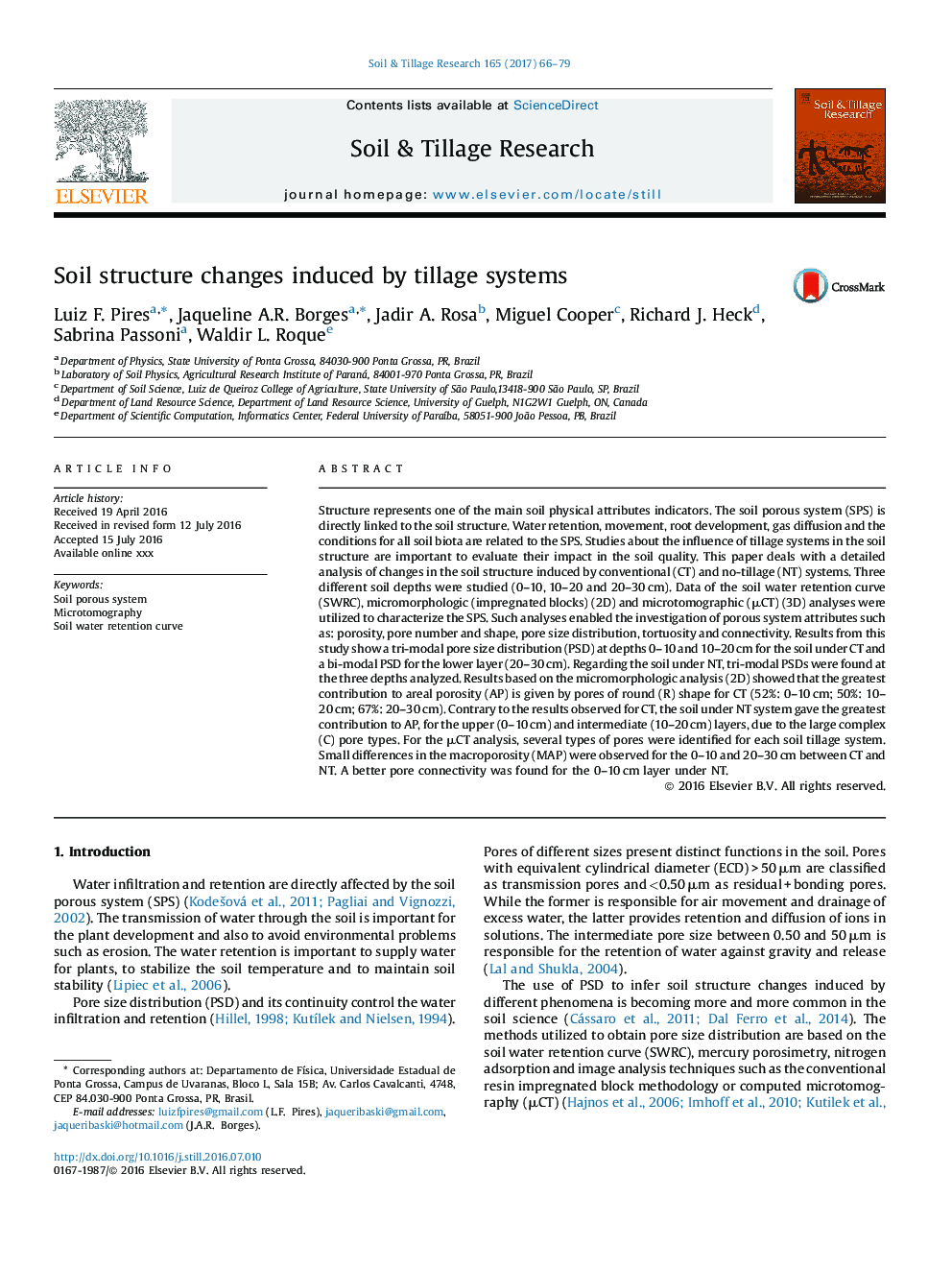| Article ID | Journal | Published Year | Pages | File Type |
|---|---|---|---|---|
| 6773273 | Soil and Tillage Research | 2017 | 14 Pages |
Abstract
Structure represents one of the main soil physical attributes indicators. The soil porous system (SPS) is directly linked to the soil structure. Water retention, movement, root development, gas diffusion and the conditions for all soil biota are related to the SPS. Studies about the influence of tillage systems in the soil structure are important to evaluate their impact in the soil quality. This paper deals with a detailed analysis of changes in the soil structure induced by conventional (CT) and no-tillage (NT) systems. Three different soil depths were studied (0-10, 10-20 and 20-30 cm). Data of the soil water retention curve (SWRC), micromorphologic (impregnated blocks) (2D) and microtomographic (μCT) (3D) analyses were utilized to characterize the SPS. Such analyses enabled the investigation of porous system attributes such as: porosity, pore number and shape, pore size distribution, tortuosity and connectivity. Results from this study show a tri-modal pore size distribution (PSD) at depths 0-10 and 10-20 cm for the soil under CT and a bi-modal PSD for the lower layer (20-30 cm). Regarding the soil under NT, tri-modal PSDs were found at the three depths analyzed. Results based on the micromorphologic analysis (2D) showed that the greatest contribution to areal porosity (AP) is given by pores of round (R) shape for CT (52%: 0-10 cm; 50%: 10-20 cm; 67%: 20-30 cm). Contrary to the results observed for CT, the soil under NT system gave the greatest contribution to AP, for the upper (0-10 cm) and intermediate (10-20 cm) layers, due to the large complex (C) pore types. For the μCT analysis, several types of pores were identified for each soil tillage system. Small differences in the macroporosity (MAP) were observed for the 0-10 and 20-30 cm between CT and NT. A better pore connectivity was found for the 0-10 cm layer under NT.
Related Topics
Physical Sciences and Engineering
Energy
Renewable Energy, Sustainability and the Environment
Authors
Luiz F. Pires, Jaqueline A.R. Borges, Jadir A. Rosa, Miguel Cooper, Richard J. Heck, Sabrina Passoni, Waldir L. Roque,
